Watching California Burn
Kimberly J. Wooten, Archaeologist, Cultural Studies Office, California Department of Transportation
There’s enough wind outside that it’s rattling the dried leaves on the century old grapevine that wraps up to the second story of my foothill home. My mind makes this instant calculation – wind speeds vs. air temperatures – reaching the conclusion that even though it is windy and extremely dry, it is also too cool to really worry about a fire start. Since 2015, I’ve been living with this new skill set – it’s a disaster skill set, an anxiety response, a calculation of potential danger. My children do this, my friends and family do this. With more than 2,400,000 acres burned in California this fire season already, much of it in northern California, September has been a little piece of hell.
At the beginning of month when I first sat down to write this blog, my 18-year old son was one week into his newly independent life – a freshman enrolled at Lake Tahoe Community College for environmental sciences – when he had to evacuate due to the Caldor Fire. He brought his fishing tackle home, but no clothing. We’d been watching the fire burn up the Highway 50 corridor, moving closer to South Lake Tahoe daily. It would rage through 25,000 acres in a day and, amazingly, another 25,000 at night. The air thickened into a golden brown, mandatory evacuations surrounded the city, and people had to be warned not to evacuate into the lake itself. There is still one part of my mind that will not let me comprehend the possibility that Tahoe, a town of 21,000, can burn; Santa Rosa, Concow, and Paradise tell me otherwise.
For those of you who don’t know the region, the Tahoe Basin is a beautiful, often rugged landscape. Along with Lake Tahoe at an elevation of 6,200 feet, there are dozens of smaller alpine lakes surrounded by granite and pines, sequoias and wildflowers. Cultural heritage traditions extend back in time thousands of years, including Indigenous archaeological sites that are still active summer gathering locations, hidden cabins that date to the early days of car camping, and historic sites like Camp Richardson, Vikingsholm in Emerald Bay State Park, and the late 19th and early 20th century lakeside estates that comprise the Tallac Historic Site. Writing this, I can almost smell the soft fragrance of vanilla that emanates from the Ponderosa Pines in the summer.
The first fire that really impacted my family was the Butte Fire in 2015. My daughter, 15 at the time, and I saw a plume of smoke driving home, wondering if it was over our town. It was massive, even only at a few hundred acres. The next morning, from the windows of our home that overlooked the fire, all you could see was a roiling wall of smoke. Bruised shades of gray, purple, and brown, and this strange golden color that would come to define our summers in California. Ash fell like snow covering everything. Nine of my daughter’s 10 friends had to evacuate. She wandered our home taking photos of everything, convinced we would have to evacuate, that our home would burn. Over the next four days the Butte Fire would explode to nearly 71,000 acres, the third largest fire in California history at the time. Massive, extreme, unstoppable. Six years later, small, typical. The Dixie Fire in northeastern California is over 960,000 acres and is nearly contained, but not until it burned though much of the gold rush community of Greenville.
The Caldor Fire is still actively burning but is progressing much slower. My son returned to his mountain home a week ago, after the narrow band of mountain roadway that is Highway 88 reopened. He passed by the 19th century establishments of Kirkwood Inn, Plasse’s Resort, and Kit Carson Lodge where spot fires persist in nearly inaccessible wilderness. For weeks, my community held its collective breath as the fire threatened these structures. We watched as walls of flames reaching 200 feet high approached, ready to evaporate these histories, our collective memories. But along Highway 88, my son also passed portions of the mountainous route that had been newly thinned, a measure that creates a wider fire break, slowing forward progress and saving natural landscapes, communities, and cultural resources.
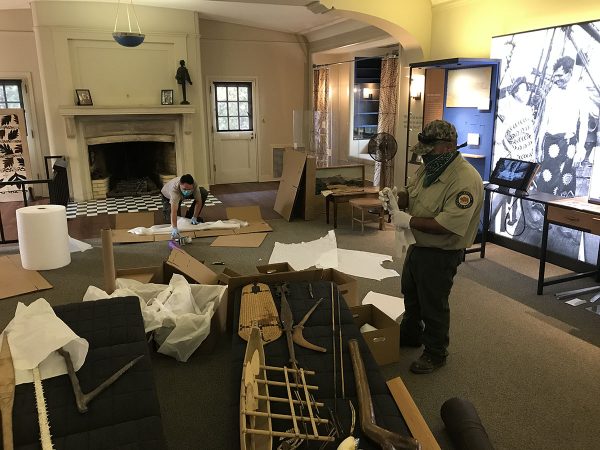
State Parks staff evacuating artifacts from Jack London State Park, Sonoma County, as the Glass Fire approached in 2020. Photo courtesy of Noah Stewart.
As western fires grown in intensity and size and the fire season expands by months, cultural resource specialists are writing fire guidance that is being tested in real time. Historic buildings are wrapped in silvery fire-resistant foils or sprayed with fire-resistant gels. What can be moved from our State Parks and local museums – archaeological collections, the piano that sits in Jack London’s home, precious pieces of our shared cultural heritage – are moved and stored. The economic costs associated with wildfire are enormous. Many agencies and organizations aren’t staffed or funded for protection and prevention measures, the evacuation of museums and facilities, loss of revenue, or the cost of physical recovery for damaged structures and infrastructure that must be repaired or reconstructed. Even when funding is available, cultural resource management companies are finding a shortage of archaeologists to do the work. For agencies and utility companies, after it is safe to enter the burn area, there is the cost of pairing archaeologists with fire recovery crews to ensure archaeological sites are not further damaged by the slow, methodical recovery work.
In terms of the archaeological sites, damage is caused by the heat of the fire itself, but also as trees fall and root balls rip up deposits and features. In the firefighting process, inadvertent damage from the construction of fire breaks or heavy equipment is a necessary cost. Depending on the intensity of the fire, at historical archaeological sites glass artifacts can break, shatter or melt; ceramics can shatter and designs burn away; metal artifacts are weakened, changing their longevity, or burn completely; leather and textiles that remain can be destroyed as fires burn into the soil itself. For dual component sites, the archaeological deposits on the surface are damaged, but their historic structural components, including historic vegetation, are often completely destroyed. With these losses, important relationships between the physical remains and archaeological deposits are also lost. Heritage protected for generations by families and communities compresses into six inches of ash, artifacts to be hauled away by FEMA. Maybe the only plus to a fire is the visibility – what was a tangle of undergrowth is now a barren, blackened landscape, which makes sites pop out visually.
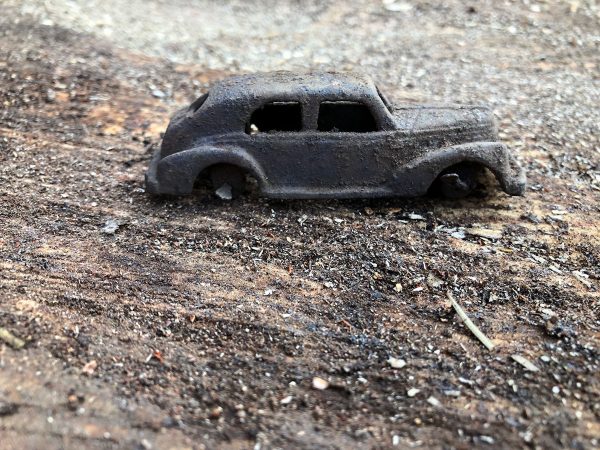
Cast iron 1940s toy car found during monitoring recovery work on the Dixie Fire, Plumas County. Photography courtesy of R. Scott Baxter.
In sitting down to write about the climate crisis and its impacts on our collective cultural heritage – a topic I normally approach from the Contemporary Archaeology perspective of plastic waste – I found myself unable to focus because our collective cultural heritage is burning. In the coming months, my husband will come home from his archaeological fire recovery fieldwork covered in deep, black soot and the distinct smell of recent burns. Summers in the Western United States are filled with a strange, golden light that has to be experienced to understand. It turns your stomach and at the same time it is now almost normal. Because humans are so adaptable, we are adapting ourselves comfortably into climate change. Western nations, for now, can do that.
I know it is cliché, but it’s also the simple truth that in the ashes of wildfires many positive things have taken root. There is a growing acknowledgement of the importance of traditional Indigenous fire technology and management practices and its applicability to the current wildfire landscape. Fire archaeology, a relatively new field, promotes technological advances and will continue to employ archaeologists for the foreseeable future. On a more personal level, in the wake of the 2017 Tubbs Fire which destroyed thousands of homes in the community of Santa Rosa, California, the need to recover human cremains resulted in the formation of the Alta Heritage Foundation (https://altahf.org/). Pairing volunteer archaeologists with cadaver canine teams, the foundation’s mission is to use applied archaeology to support the humanitarian efforts of cremains recovery, as well as address the impacts of climate change on cultural resources. For many of the archaeological volunteers who have worked in the aftermath of wildfires since, helping families recover the cremated remains of loved ones thought lost forever is how we help ourselves cope with the new fire reality of California burning.
UNP-SHA Publication and Author Perspective
September 8, 2021
Submitted by Mary L. Maniery
PAR Environmental Services, Inc., President
SHA Co-Publications Associate
In March 2018, the SHA began a blog for the Society webpage to highlight our collaboration with various presses, including volumes published in collaboration with the University of Nebraska Press, Omaha (UNP). The co-publication program expands our membership’s publication opportunities. UNP is offering SHA members this publication for $48.00 (normally $80.00), an offer valid through December of 2021. Be sure to use discount code 6AF21 when ordering!
If you are interested in contributing a joint UNP-SHA published volume, please contact SHA’s Co-Publications Editor, Benjamin Ford (ben.ford@iup.edu)
ABOUT THE BOOK
New Life for Archaeological Collections (2019)
Rebecca Allen and Ben Ford, editors
Number of pages: 450; 30 figures; 6 maps, 14 tables, index
University of Nebraska Press, Omaha
Society for Historical Archaeology Series in Material Culture Series
New Life for Archaeological Collections explores solutions to what archaeologists are calling the “curation crisis,” that is, too much stuff with too little research, analysis, and public interpretation. This volume demonstrates how archaeologists are taking both large and small steps toward not only solving the dilemma of storage but recognizing the value of these collections through inventorying and cataloging, curation, rehousing, artifact conservation, volunteer and student efforts, and public exhibits.
Essays in this volume highlight new questions and innovative uses for existing archaeological collections. Rebecca Allen and Ben Ford advance ways to make the evaluation and documentation of these collections more accessible to those inside and outside of the scholarly discipline of archaeology. Contributors to New Life for Archaeological Collections introduce readers to their research while opening new perspectives for scientists and students alike to explore the world of archaeology. These essays illuminate new connections between cultural studies and the general availability of archaeological research and information. Drawing from the experience of university professors, government agency professionals, and cultural resource managers, this volume represents a unique commentary on education, research, and the archaeological community.
AUTHORS INTERVIEW
MM: What are some of your motivations for writing/spearheading this book?
RA/BF: We organized New Life for Archaeological Collections in recognition of the increased amount of historical archaeological work being done with legacy collections, and collections that lack accompanying reports. This is important work because it fulfills our ethical obligations to preserve and steward the archaeological record. Studying or restudying a collection is preservation in that the study is not disturbing an archaeological site, leaving that site for future archaeologists with different questions and better methods. It is stewarding in the sense that we are wringing as much information as possible from archaeological resources and contributing to the knowledge of a site and respective descendant communities. As archaeologists curate collections for future research, engaging with these collections fulfills the promise of archaeological knowledge, and teaches archaeologists to become better at how they research, excavate, engage with the community, and curate in the future.
MM: Who would you like to read this book? Who is your audience?
RA/BF: New Life for Archaeological Collections is for any archaeologist with an open mind about using collections. For students or those who have not thought of using an existing collection for their research, this book provides many good examples of research questions and approaches that have been fruitful, as well as warnings of the possible pitfalls and frustrations. For archaeologists already using existing collections in their research, there are several examples that will help inform their practice. There is plenty of room for growth in collections-based research. This book doesn’t claim to be the final word on using existing and legacy collections, but we hope that it is a conversation starter.
MM: Now that you have published this book, what kinds of things are you dreaming up next? What is in the works?
RA/BF: Hopefully we will work together on a future project. We had a lot of fun doing this book and found that bringing our different perspectives, experiences, and networks to bear on this topic made for a stronger book. In the meantime, Rebecca is working with descendant Native American communities who may not want to curate artifact collections, but do want to leave cultural knowledge, data, images, and oral histories for future studies and future generations. Ben just published an underwater archaeology textbook with Jessi Halligan and Alexis Catsambis – Our Blue Planet (Oxford University Press). His next project is to pull together the Hanna’s Town legacy collection and use the lessons learned from New Life for Archaeological Collection to really make it sing.
The South Carolina Archaeological Archive Flood Recovery Project
by Meg Gaillard
Archaeologist
South Carolina Department of Natural Resources, Heritage Trust Program
Nearly six years ago, a catastrophic flood event affected the Carolinas from October 1 – 5, 2015. During this event, a large portion of the South Carolina Department of Natural Resources (SCDNR) archaeological archive was inundated. Following initial recovery efforts to remove and relocate all archives to a secure long-term triage facility, I lead an eight-month stabilization and re-curation of the materials – The South Carolina Archaeological Archive Flood Recovery Project – with the assistance of many volunteers and other professionals.
The 2015 flood was the catalyst for the development of a more robust disaster plan for our team, and lead to the acquisition of SCDNR’s Parker Annex Archaeology Center located in Columbia, SC in April 2017. Within this blog I will share portions of our recovery methodology, lesson learned from our experience, and recommendations for additional information and training opportunities in hopes of helping others in the event you are faced with a similar situation in the future.
During the Flood of 2015, rain totals across the Carolinas ranged from 10 – 26 inches. Emergency responders, including the SCDNR, conducted over 1,500 water rescues. Over 500 roads and bridges throughout the state of South Carolina were closed and 47 dams failed. Over 20,000 residents were displaced, drinking water was disrupted for 40,000, and 19 people lost their lives. A detailed story map of the flood produced by the SCDNR can be found here: South Carolina Flooding 2015 Story Map.
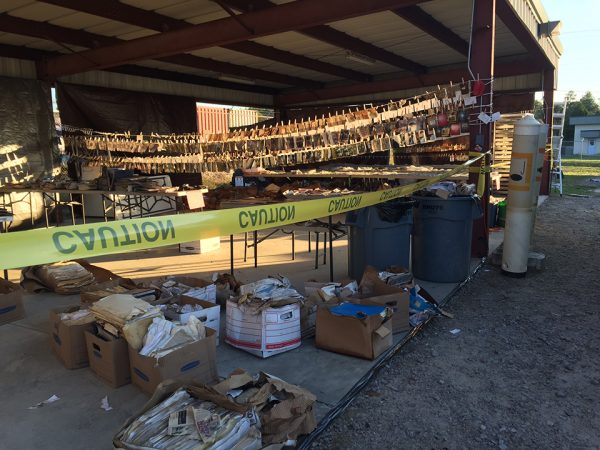
Figure 2 – 2015 Flood Triage Center 2 – located at the SCDNR Styx Receiving Compound in West Columbia, SC. This location was only used for a couple days due to additional incoming thunderstorms. All items were moved to Triage 3 (old Lexington Two Fine Arts Center in West Columbia, SC) and Triage 4 (SCIAA Curation Facility in Columbia, SC).
On October 7, 2015, when waters receded, the recovery of archived SCDNR archaeological materials began. The South Carolina Archaeological Archive Flood Recovery Project lasted for eight months and consisted in the recovery of approximately 1,500 boxes of previously curated artifacts, 100 cubic feet of documents, and 15,000 photographs, negatives and slides (Figure 1). An initial triage facility for the archive was located at the SCDNR Fish Hatchery in West Columbia, SC (Figure 2). Within two days, the recovered items, which were coming into the SCDNR facility in truckloads (Figure 3), exceeded the available space. This, compounded by the threat of another wave of severe weather, hastened the acquisition of a new facility for long-term recovery efforts to take place.
Lexington School District Two donated the use of their old Fine Arts Center in West Columbia, SC (Figure 4) to the SCDNR for the duration of the flood recovery project. This facility was located to the west of downtown Columbia, SC where the archived material was inundated. The flood recovery project took place at this facility from October 2015 to May 2016 with the help of 135 volunteers and six temporary part-time staff, in addition to full and part-time SCDNR staff (Figure 5). All available space in the facility was utilized, and although quite large at approximately 5,000 square feet, the layout of the recovery effort had to be transformed every few weeks to keep up with the changing focus of the work.
The flood recovery project was organized into a phased approach. The recovery and restoration of the entire archive at one time was impossible due to its size and complexity of material culture. The recovery and stabilization of documents took first priority. Documents were sorted and approximately 100 cubic feet were sent to five SCDNR freezers. The freezing of documents stopped the growth of mold, and essentially stopped time until the restoration of those documents could take place at a later date.
The second priority was the cleaning and drying of photographs, negatives, and slides (Figure 6). Ideally, all of these items would have been laid flat to dry, on well ventilated surfaces; however, due to space and time constraints, the method of hanging photographs and negatives, while laying slides to dry flat was chosen. Approximately 3,000 images were cleaned, dried and stabilized each day over the course of five days. These images were scanned into a digital archive during the summer of 2016 by an SCDNR archaeology intern.
The third priority of the flood recovery project was the washing, drying, labeling, bagging and boxing of artifacts. Nearly every bag of artifacts was inundated with water due to the buildup of water pressure during the flood (Figure 7). In order to ensure that all artifacts were properly re-curated, every artifact went through the full curation process again. Diagnostic metal objects were stabilized through metal conservation by SCDNR archaeologist Tariq Ghaffar (Figure 8), while all other artifacts were washed with clean water and dried.
One recommendation I would like to make regarding boxes of artifacts is in the way they should be transported from an impacted facility. Cardboard curation boxes are not going to maintain their structural integrity following impacts from water related disasters (Figure 9). To ensure that all objects within those boxes maintain their provenience information, and to provide a safer method for staff to transport those objects from the impacted facility, I would recommend transferring boxed objects into sandbags (Figure 10). One box of objects to one sandbag. All associated labels should be placed within the bags, and a duplicate set of label information should be written on flagging tape that is tied to the outside of the bags.
Safety of personnel during all phases of the project was a top priority. Volunteers and staff were required to wear gloves at all times. Depending on the task, protective masks, long 18 mil aprons, and protective eyewear were also available. Although the temperature was controlled, ventilation was aided using large industrial box fans and humidity was controlled using dehumidifiers.
There were numerous supplies purchased for and donated to the project. One of the most unique was the purchase of thousands of paper food trays – the same type that might hold a burger and fries. Since all the artifacts washed during the flood recovery project had already been curated and contained paper labels and/or information on their bags, the best way to keep the artifacts and associated information organized was to place cleaned artifacts in food trays and place the information (bag and/or tag) that was impacted by flood waters below the tray on drying racks (Figure 11). Once the artifacts dried, new tags and bags replaced the old, and the artifacts were stored in new boxes.
Another unique object was an outdoor washing station constructed by SCDNR archaeologist Sean Taylor. Made from a table screen typically used for volunteers to screen dirt in the field, this table served as a station for washing large pieces of pottery after industrial kitchen sprayers, foot pedals and plumbing were installed (Figure 12). The repurposing of materials and supplies we had available was essential throughout the recovery process in addition to the purchase of new recovery supplies.
The overall recovery plan for the South Carolina Archaeological Archive Flood Recovery Project was based on information I had received in two one-day disaster preparedness and recovery workshops hosted by the South Carolina Department of Archives and History in 2010. In hindsight there are many things I wish I had done differently, but it was through the experience of the 2015 flood recovery effort that I learned better ways to approach disaster recovery in the future. The unfortunate reality is that workshops and lectures, however detailed, cannot fully prepare you for every disaster. Even one’s experience preparing for and recovering from prior disasters might not be enough. In the end, it all comes down to preparing yourself, your staff, and your facilities as best you can for potential disasters like what we experienced in 2015, asking for help when you need it, and assisting others when you can.
This blog is based on a one-hour lecture I provide for free to my interns, university classes and cultural resources institutions in hopes of providing information to assist others during future disasters. If you are interested in this lecture, please contact me at GaillardM@dnr.sc.gov.
- Additional Resources:
• National Heritage Responders Hotline: 202-661-8068
• American Institute for Conservation (AIC), Emergencies page:
https://www.culturalheritage.org/resources/emergencies
• Smithsonian Cultural Rescue Initiative: https://culturalrescue.si.edu/
• Heritage Emergency National Task Force: https://culturalrescue.si.edu/hentf/
• Curae Collections Care, LLC., Resources page: http://curaecollections.com/resources
THE FUTURE OF OUR PAST: Marine wind effects on Makli
written by Zahida Quadri
Editor Sindh Antiquities,
Directorate of Antiquities and Archaeology-
Culture, Tourism, Antiquities & Archives Department
Government of Sindh, Pakistan
For many of you the World heritage site of Makli may be new to read about. It is a funerary complex on the outskirts of Thatta, Sindh, a province of Pakistan where I live. It is the world’s largest and one of the most unique necropolises, with an extraordinarily diverse architecture of carved stone monuments and Islamic furnery art. Its tile-clad brick tombs stretched along the Indus River, creating a striking vista visible from afar.
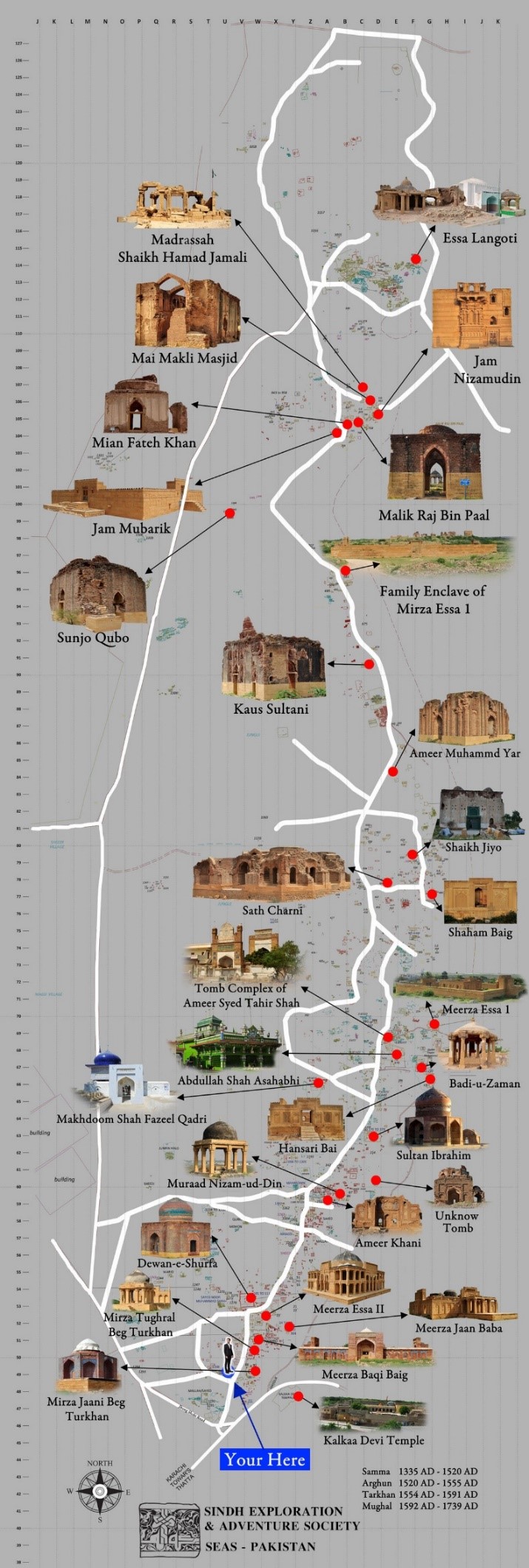
Makli Site Map contained some of its important structures, prepared by the Directorate of Antiquities and Archaeology and SEAS Pakistan
The historical site of Makli was inscribed as a UNESCO World Heritage Site in 1981 as an “outstanding testament” to Sindhi civilization between the 14th and 18th centuries. The site spreads over an area of 10 square kilometres. The site houses approximately one million graves/tombs built over the course of a 400-year period of the Sumas (1340 to 1520 A.D.); the Arghuns (1320 to 1355 A.D.); the Tarkhans (1355 to 1592 A.D.); and Mughals (1592 to 1739 A.D.) who ruled over Sindh with their capital at Thatta. This unique assemblage of various monuments was built with a variety of brick and stone elements over the graves of buried Kings, Queens, Governors, Saints, Scholars, Philosophers and Soldiers of the time. Most of the graves are decorated with the beautiful carving of Quranic verses and geometrical designs over the stone slabs. The site lies over 40 feet high–Makli hill comprised mainly of Eocene age limestone rock–belonged to royalty, various Sufi saints, and esteemed scholars.
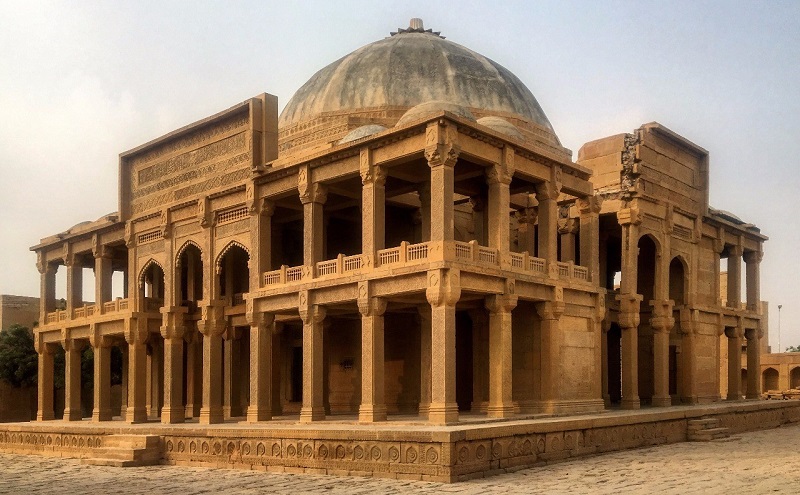
Source: Dr. Abdul Razak Channa, Tomb of Esa khan Tarkhan
This blog is a part of study [report] of the recent initiative of Directorate of Antiquities and Archaeology – Culture, Tourism and Antiquities Department, Government of Sindh, ―Study the effects of windborne salinity on the monuments and development of feasible mitigation measures to reduce this impact on the outstanding universal value (OUV) of the historical monuments at Makli, Thatta, Pakistan. A detailed report will be published in Department’s research journal, Sindh Antiquities, ISSN; 1276-1996, Vol-06, No 02, SPECIAL ISSUE, HERITAGE AT RISK. The prime focus of the blog is the marine winds effects on Makli hills monuments.
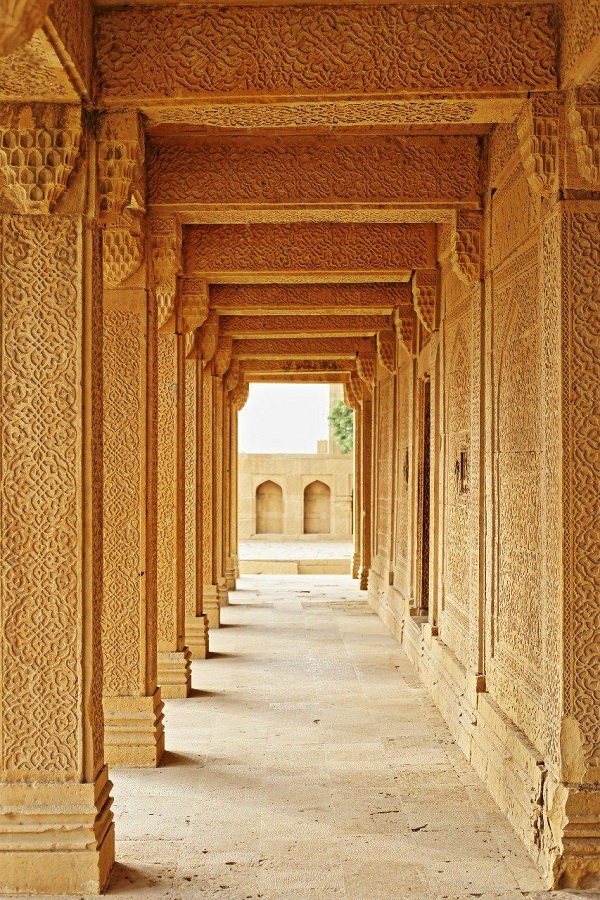
Source: Dr. Abdul Razak Channa, Inside panels of Esa khan Turkhan Tomb
Windborne salinity is one of the major threats to historical monuments and heritage sites around the world. In addition, wind effects in general, air pollution due to anthropogenic reasons, rain, daily and seasonal temperature, humidity and pressure changes are posing significant threat to historical buildings. The monuments closer to marine environments are more exposed to adverse effects of windborne salinity and salt aerosols in particular. The historical monuments of Makli are situated at a distance of about 50km from the nearest landward extension of coastal creeks/waters along the Arabian Sea. Though at a considerable distance, the historical monuments are fairly exposed to marine winds especially to very strong monsoon winds during summer months.
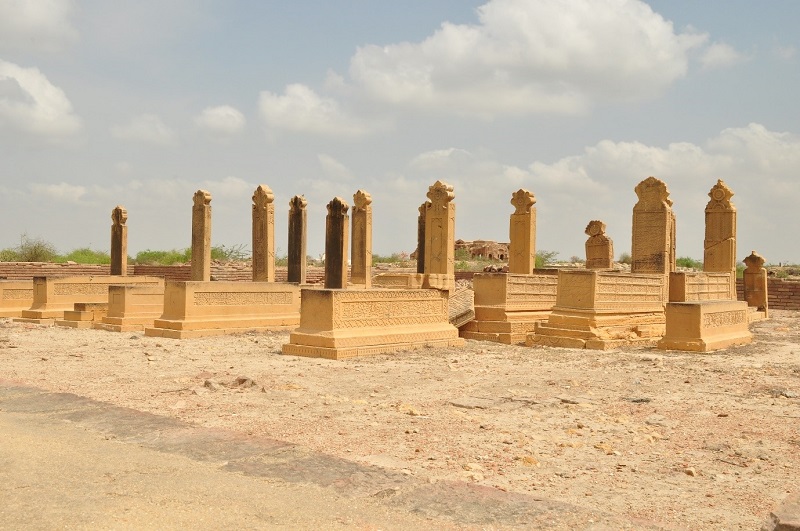
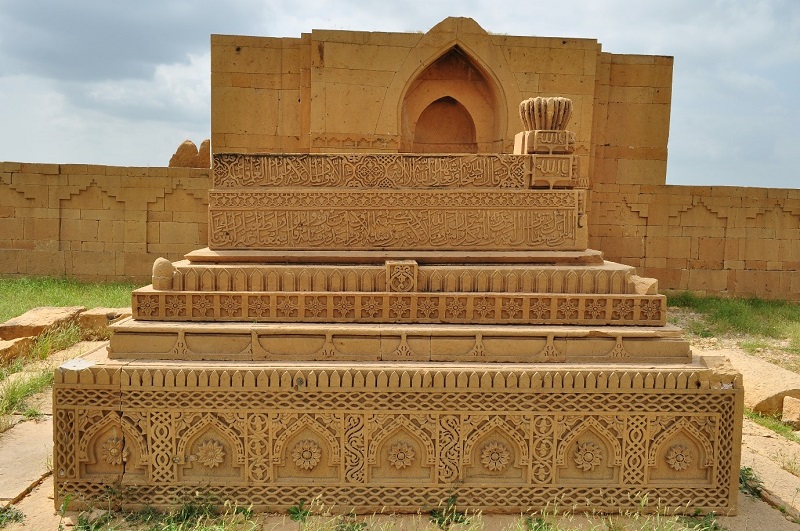
Source: Directorate of Antiquities and Archaeology; [above] Royal family encloser, [Below] the tomb of Dulhey Darya khan
The prevailing winds are one of the determinants of the microclimate surrounding a monument. Seasonal winds, and a seasonal climate in warm zones and monsoon regions are more harmful to buildings. Winds can also influence the change in humidity. The stones chiefly used in monuments at Makli are limestone and sandstone whereas widespread use of baked bricks is also common. Damage to these monuments is largely caused by intrinsic porosity as the water along with various chemicals including windborne salts can penetrate the stones from atmosphere. Humidity and the salts carried out by ocean blown particles play vital role in the deterioration of the stone used in structures and monuments a Makli. The air distance from the Makli area with the Arabian Sea may be sixty to sixty-five kilometres. The surfaces directly exposed to the wind direction were disturbed more than those areas which were not exposed to the air direction from the southwest. The prevailing winds blowing at high speed in intense heat also carry particles of solid matter, which result in erosion of surface materials. The windborne salts and other weather-related impacts are seen as serious threats to Makli Necropolis.
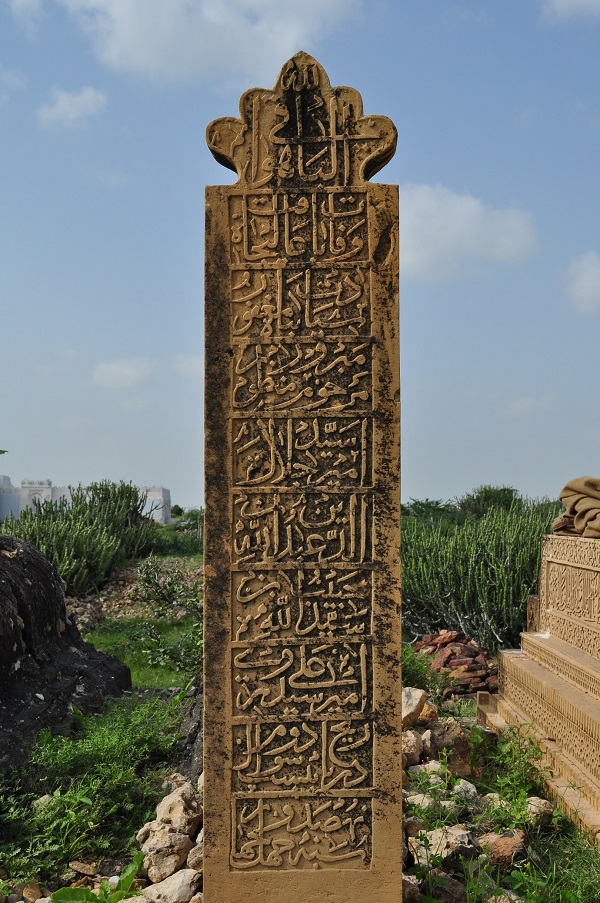
Source: Directorate of Antiquities and Archaeology, erosion effects are visible on the stone slab
Although preventive measures have been taken and the world heritage committee of UNESCO has expressed its satisfaction over the measures the department has taken, climate change has adversely affected Makli over the past decades. A large number of historical monuments at Makli have either been completely or partially damaged. The variations in temperature, humidity, rainwater, salinity, and windborne salts are largely responsible for the degradation of the building structures including the carved stones on graves. The incidence of salt/sulphate attack is visible near the tops of the walls or within the domes. The deposition of salts in the fabric is occurring through the salt-laden moist air to which the monuments have continuous exposure all the year round. It is possible that impurities were present in the original building material and may have been re-introduced unwittingly in materials used for repair and restoration work in more recent times. Mr. Qasim Ali Qaim, the former director Archaeology stated in his report published in the Journal of Research in Architecture and Planning (2014), the exposure of Makli monuments to average velocity of about 10-12 miles per hour saline natured winds and periodic rains result in surficial damage as well as percolation of water within the cracks and pores causes serious internal decay after saturation of the external surfaces.
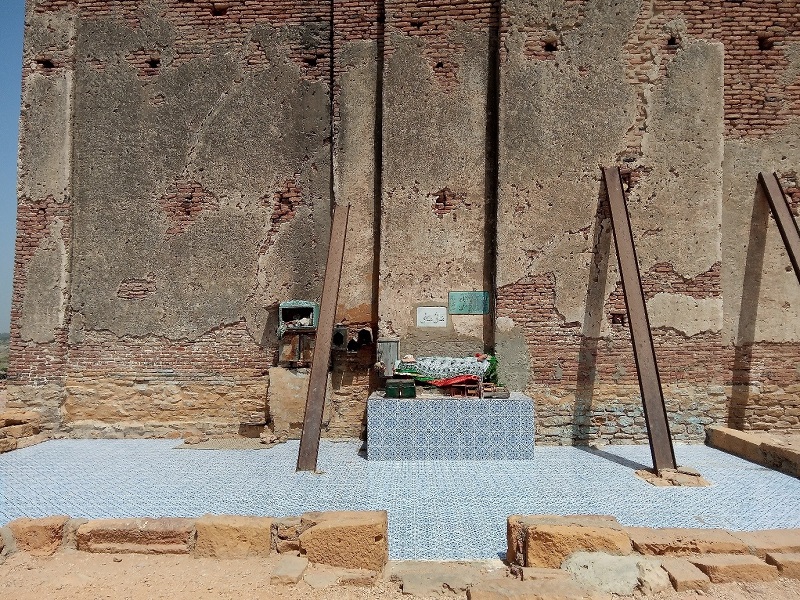
Source: Author, the tomb of Mai Makli
The study that has been carried out on the three monuments with eighteen selected samples of interior and exterior of the buildings, tiles, bricks, and decorative stones carved with Quranic verses and geometrical designs, stated that the deterioration of structure due to air-borne salts can be considered at initial stage. However, climate change is of global concern, affecting heritage, in different ways, especially as a growing threat to UNESCO World Heritage (WH) properties worldwide. It is essential to exchange and promote case studies, to understand the vulnerability of heritage sites and to provide practical solutions to addressing climate change by harnessing the potential of local tangible and intangible heritage resources.
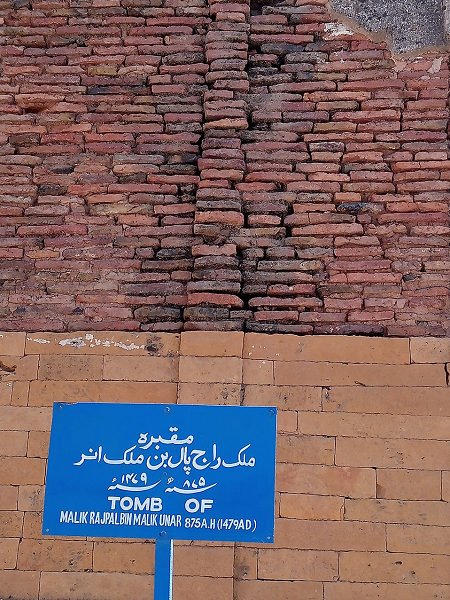
Source: Author
A Summary of the Past Presidents’ Student Reception on Careers in Cultural Resource Management
Society for Historical Archaeology 2021 Virtual Conference
By Amanda Evans, Donn Grenda, and Joe Joseph
Earlier this year, during the Society for Historical Archaeology’s (SHA) 2021 Virtual Conference on Historical and Underwater Archaeology, students had multiple opportunities to network with professionals as part of the Past Presidents’ Student Reception. Organized and moderated by Mr. Terry Klein and Dr. Teresita Majewski, the reception consisted of a series of live panels during the conference that brought students together with SHA leaders to talk about careers across the spectrum of archaeology, including positions in government agencies, academia, public engagement, museums and collections, underwater archaeology, and cultural resource management (CRM). In advance of the conference, students were invited to submit questions that were addressed during the panels, along with open question and answer during sessions.
The session on careers in CRM was held on Friday, January 8, 2021, from 12:00 p.m. to 1:00 p.m. CST. The panelists for this session were:
- Amanda Evans, Ph.D., RPA, Maritime Services Practice Leader, Gray & Pape, Inc.
- Donn Grenda, Ph.D., RPA, President, Statistical Research, Inc.
- Joe Joseph, Ph.D., RPA, Director of Administration, New South Associates
Given that we are now in the midst of graduation season, the SHA blog series presents a summary of the CRM discussion from the Past Presidents’ Student Reception series. For those in the job market, or about to enter it, we hope you find these questions and the collective answers useful.
Question: What type of work experience or nonacademic training do I need to get a job in
CRM?
Answers:
- A field school is a minimum requirement for entry-level positions within CRM.
- Previous experience in the geographical area or region in which you are applying is desired, but previous CRM experience is more important if you’re applying for a position in an area or region that you have not previously worked.
- For people trying to start a career in archaeology that have not had previous experience, local archaeological societies may offer field or other volunteer opportunities that can help a candidate build their experience.
- Once hired, employers are looking for people that are dependable and work hard, and that can get along with others in a team environment and are willing to learn.
- Previous experience (either paid or volunteer) doing the types of tasks relevant to the position you are applying for will set you apart from other candidates.
Question: How should I structure my resume or CV to pursue a career in CRM?
Answers:
- Include your academic qualifications, and for new professionals just starting out you can include higher-level coursework that you’ve completed.
- Identify your research interest(s). If the project or position aligns with your area of interest, that can make you a preferred candidate over someone with relatively similar experience.
- When describing your previous project experience, provide specific details about the tasks you were responsible for completing or project details. For example, rather than saying you went on a survey, describe how large the survey was (e.g., 13 miles, 1,500 acres), the types of terrain, and the survey methods used.
- Provide references who can speak to your abilities and work experience.
- If possible, include a cover letter. When an employer is going through stacks of technicians’ resumes, many of whom have comparable experience, a cover letter calling out why a candidate thinks they would be a great hire or why they think their research efforts fit with the work that the employer will be conducting can better illustrate a candidate’s qualifications to the hiring manager. In a cover letter, the applicant can also demonstrate their knowledge of the company to which they’re applying, and this can set them apart from other applicants.
- Specify whether your experience includes precontact sites, historical-period sites, or both.
Question: If someone has a Master’s degree or higher, are they expected to meet the Secretary of the Interior’s (SOI) Professional Qualifications Standards for Archaeology?
https://www.nps.gov/history/local-law/arch_stnds_9.htm
Answers:
- If the position explicitly asks for someone meeting SOI qualifications, then yes, your resume should demonstrate that you meet the standards.
- If the position is entry level and you have a Master’s degree, whether you meet SOI qualifications or not, you should state why you are willing to accept an entry-level position. Maybe it’s to build your field experience in a specific region, or on a project type, or as a way to get a foot in the door with a specific company. If you are eligible (Master’s degree or higher) you should become a Registered Professional Archaeologist (RPA).
Question: What does the job market look like for CRM?
Answers:
- Currently, the job market is growing faster than many CRM firms can keep up with, driven in large part by energy (especially renewable energies), military, and transportation projects. The White House’s proposed infrastructure bill (at the time of writing this summary) would increase the need for CRM professionals.
Question: How much does the region where you get an advanced degree determine the region where you’re hired?
Answers:
- The panelists agreed that the quality of the program matters more than its location and suggest evaluating graduate programs or the professors that a student would like to work with, or the specialties and research opportunities available through that department or program.
- The caveat is that each school or program will present opportunities for experiences or networking that may not translate to the area where you want to work or live.
- Individual professors or entire programs may have relationships and associations with private companies, museums, non-profits, or regulatory agencies. Those relationships could ultimately influence your opportunities and experiences as you develop your career path.
- There are situations where a state may require that you have a set level of experience in that state in order to work there.
- If applying to a position outside of your area, for example if you completed a graduate program overseas, try to explain in your cover letter how your skills or theoretical training apply to historic preservation generally and how your degree program prepared you for the position to which you’re applying.
Question: What non-archaeological skills are most useful or sought after in CRM?
Answers:
- The ability to write is extremely important in CRM. Being able to communicate effectively in writing – to prepare reports, permit applications, and proposals – are critical skills that you will need to move beyond being a field technician.
- Management experience, being able to manage people, schedules, and budgets are all important skills. You may be able to demonstrate that through previous work experience outside of archaeology.
- The ability to drive a 4-wheel drive vehicle, or the ability to drive large work vehicles. It is more critical than you would believe since field crews often use large trucks, but scenarios happen where an employee pulls into a gas station and runs into the gas pump because they’ve never driven a truck. Or when you’re out with a crew in the middle of nowhere and you get stuck in the sand/mud. Do you know how to get out of the sand/mud? Do you know how to change a tire?
- For the maritime positions, we always have a wish list of skills that can help set a candidate apart, things like small boat engine repair or boating experience. Are you familiar with knots? A lot of times we’re having to fabricate things on the boat in the field, we’re having to fix things that broke, we need to trailer a boat. To the earlier point about large trucks, it’s even harder to pull into the gas station with a 30-foot trailer behind the truck.
Question: Are research, publication, and presentations encouraged or valued in CRM archaeology?
Answers:
- That answer will vary from company to company. Some companies will actively encourage and support conference participation, others will ask that it be done on an employee’s own time.
- Publications and presentations definitely benefit the individual employee. It helps you to become known in the field for your research interests or regional expertise, and it helps to build your network.
- You should be looking at opportunities to give presentations and to be active in archaeological societies and organizations. Those activities may introduce you to CRM archaeologists, or you may have somebody hear a talk that you presented and want to talk with you afterwards because they have a project coming up and they think you might be a good fit.
- It is a strength on your resume to show publications and presentations. That’s part of the resume filter. Companies that actively encourage this will look for it in the resumes of candidates they consider.
Question: Should an applicant use their thesis as a writing sample as part of their application package?
Answers:
- Unless your thesis is completely unrelated to the job, yes you should use it as a writing sample. Employers will understand that the requirements for the thesis may include jargon or sections that don’t equate to a CRM report, but we understand the structure of a thesis. If you’re not submitting a part of your thesis and you’re applying for a job as a supervisory archaeologist or other position that involves writing, it may raise more questions.
Question: What types of ancillary archaeological and non-archaeological positions are available within CRM?
Answers:
- Ethnographers
- Historians
- Physical anthropologists / Mortuary archaeologists / Bioarchaeologists
- Zooarchaeologists / Archaeobotanists
- Geophysical specialists (terrestrial and marine remote sensing)
- GIS specialists
- Illustrators / Graphic designers
- Editors / Report production
- Architectural historians / Historic architectural specialists
- Laboratory directors
- Curation managers
- Accounting and Administration, including Human Resources
- Project Managers
- Health, Safety, and Environment officers
- Marketing and Business Development
- Information Technology
A Closing Note from Terry Klein and Teresita Majewski:
We were very pleased about the results of this and the other career sessions. Exchanges between the panelists and attendees were lively and very informative, and several attendees acknowledged their thanks at the end of each session. We are looking forward to the next Past Presidents’ Student Receptions in Philadelphia! It will be great to finally see everyone in person!
If you have any questions about this and the other career sessions, or future Past Presidents’ Student Receptions, please contact Mr. Terry Klein (tklein@srifoundation.org) or Dr. Teresita Majewski (tmajewski@sricrm.com).
Shell Middens: Heritage at Risk on the Maine Coast
Alice Kelley, University of Maine, School of Earth and Climate Sciences
akelley@maine.edu middenminders@maine.edu
Over 2,000 shell middens (or shell heaps or mounds) on dot the 3500 mile long mainland and island Maine coast. From the water, middens appear as a flash of white cascading down a bluff or a white apron on a beach. Long thought to be “Indian dumps” by local residents and early archaeologists, recent work demonstrates that these sites are a rich archive of past lifeways and environments and a cultural touchstone for the region’s Indigenous inhabitants. Virtually all the middens seen today are eroded remnants of larger features.
The largest component of shell mounds are clam or oyster shells. Clam shells are the most frequent constituent along the Maine coast, but significant oyster shell heaps are located in the Mid-Coast region near Damariscotta. Other cultural material is associated with the shells; pottery sherds made from local clay, the remains of stone and bone tool production, and faunal and floral remains. The weathering of the shells neutralizes Maine’s typically acidic soil, making middens one of the few archaeological settings in Maine that preserve unburned bones, bone tools, and seeds. In the interior, organic remains are limited to calcined bone.
Most of the shell heaps visible today were built by Wabanaki people, and range in age from 4,000 to European contact. It is likely that older mounds existed, but they were eroded and submerged as sea level has risen along the Maine coast for the last 12,000 years. However, climate change is accelerating the pace of coastal erosion through sea level rise, increasing storm frequency and intensity, and more frequent freeze thaw events.
Early excavations in the 19th century focused on archaeological material culture, and shoveled through the shells in search of artifacts. In some cases, collection of archaeological materials was secondary to mining shells for lime production, chicken feed, or road materials. Modern excavations have revealed a wealth of information on pre-European indigenous lifeways and seasonal movements in the coastal zone. Faunal remains from middens are also an important resource for researchers interested in two New England/Maritimes extinct species, the Great Auk and the Sea Mink.
Maine shell middens occur in a variety of sizes and coastal settings. The largest remaining shell heap is the Glidden Midden in Newcastle. Composed of largely oyster shells, the midden rises almost 30 feet above the west bank of the Damariscotta River, and extends for almost 300 feet along the shoreline. It is easily viewed from the Whaleback Historical Site on the opposing bank in Damariscotta. The Whaleback Midden was even larger than the Glidden Midden, but was almost entirely removed in the late 1880’s to produce crushed shell for chicken feed and road material. The Glidden Midden’s large size may be due to its composition of oyster shells, larger than clam shells, and its more protected position on a tidal river, rather than on the open ocean. Clam-shell dominated shell mounds are found both in sheltered coves and on more open stretches of coast. Those in sheltered locations tend to be limited in size, while some in more exposed extend over 30 meters along the shore on beaches or bluffs. They are likely the remains of much larger features easily visible from offshore, and suggest a social function beyond refuse disposal.
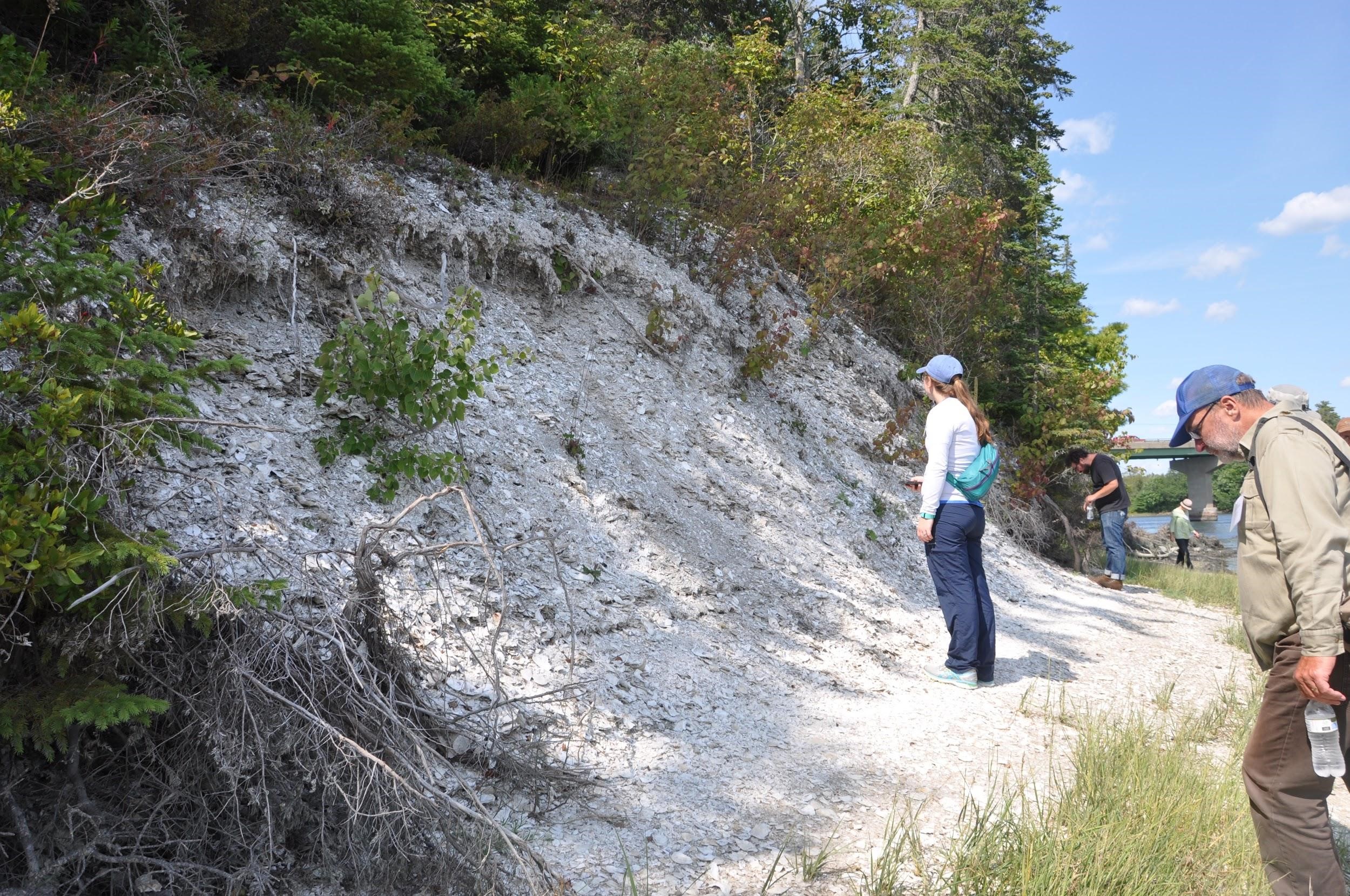
However, we may never know what roles shell mounds played in the social setting of early Indigenous people. Many shell middens are eroding in the face of climate change-induced impacts. Rapidly rising sea level brings the reach of more frequent and intense storm waves higher along the shore. Increasing numbers of freeze-thaw events serve to destabilize the middens and hasten their erosion. Development and looting damage middens. All of these impacts are intensifying, just as these features are being recognized as recording important cultural and environmental information.
The Maine Midden Minders was created in conjunction with the Maine Historic Preservation Commission and Maine Sea Grant to create a link between academic/governmental research and local citizens and tribal members to monitor and document the erosion of many recorded but unstudied middens.
Bringing citizen scientists into a data collection program first required a shift in thinking for professional archaeologists. In the past, shell midden locations have been shared only with trusted researchers in an effort to prevent looting and trespass. Recognizing that community members already know where middens are located, the program is based on a volunteer’s local knowledge, rather than assigning middens to those who apply to the program.
Annual measurements made using simple tools or 3D drone photography are used to measure erosion. Seasonal change is documented using sequential photographs and notes that are recorded in a data base designed to protect midden locations and their private landowners from disturbance. The pandemic has created a hiccup in our recruiting and measurement activities, but we are ramping up with a new season.
For more information about the Midden Minders, go to our website:
umaine/edu/middenminders/ or contact us at middenminders@maine.edu
A Summary of the Past Presidents’ Student Reception on Careers in Community Engagement
A Summary of the Past Presidents’ Student Reception on Careers in Community Engagement
Society for Historical Archaeology 2021 Virtual Conference
By Bill Lees, Della Scott-Ireton, and Sara Ayers-Rigsby
During the Society for Historical Archaeology’s (SHA) 2021 Virtual Conference, the SHA held six “virtual” Past Presidents’ Student Receptions over several days. During these sessions, which were each an hour long, students were able to engage SHA’s leaders in conversation and explore a wide range of career paths in historical archaeology.
The following is a summary of the discussions from the session on careers in Community Engagement, held on Friday, January 8, 2021, from 1:30 p.m. to 2:30 p.m. CST. The panelists for this session were:
- Bill Lees: Executive Director, Florida Public Archaeology Network (FPAN)
- Della Scott-Ireton: Associate Director, FPAN
- Sara Ayers-Rigsby: Director, Southeast/Southwest Regions, FPAN
In early December 2020, SHA sent students registered for the 2021 Virtual SHA Conference a survey with a list of questions about careers in historical archaeology. Students were asked to select the career type or types of their choice, and then select the top three questions they would like the session panelists to address in terms of these career paths.
During the first half of the session on careers in Community Engagement, the panelists discussed and responded to the top three survey questions. The number one question students were interested in was: What does a career in public archaeology and community engagement look like? Dr. Lees opened the conversation by enumerating how community engagement is conducted by archaeologists at all levels. This includes archaeologists working for the federal government or cultural resource management firms, as well as dedicated public archaeology organizations across the country like the Florida Public Archaeology Network and Archaeology in the Community. The panelists discussed that larger organizations want to ensure that their work is relevant and useful to different communities.
Another popular question was: How to structure a resume or CV to pursue this type of career. Dr. Scott-Ireton emphasized the importance of outside training from groups like the National Association for Interpretation, which can help prospective community archaeologists hone their interpretation skills. Ayers-Rigsby added to this, reminding students to highlight their relevant skill sets (for example event planning or working with local youth groups) on their resumes/CVs. Dr. Lees also pointed out that classes or volunteering that might help students improve their communication skills generally would be helpful as well. All panelists agreed that being able to interpret technical information in a way that would be exciting and relevant to people without dumbing anything down was a vital skill for aspiring community archaeologists.
Students were also interested in how to approach networking. All panel members encouraged students to reach out to archaeologists whose work they were interested in and introduce themselves. In addition to events like the Past Presidents’ Student Reception, students were encouraged to get involved with committees at SHA like the Public Education and Interpretation Committee (https://sha.org/about-us/standing-committees/).
During the second half of the session, attendees were asked to post their own questions in the Chat Box, and the panelists responded to each question in turn. Questions from the chat included:
Do you see CRM firms reaching out to do public engagement?
Do you see other states creating similar network-based approach (like FPAN?)
Could the panelists possibly speak to the relationship between public archaeology and public history and your experiences?
Ayers-Rigsby and Dr. Lees spoke broadly about their experiences working in CRM and how local communities are often interested in archaeological excavations in their neighborhood that are taking place in conjunction with development. Dr. Lees also spoke about the potential for community engagement as creative mitigation for large-scale projects.
During the discussion about other states creating similar network-based approaches, Della Scott-Ireton again directed people to Archaeology in the Community, and for those interested in underwater archaeology suggested they investigate the Nautical Archaeological Society. For those interested in public archaeology and public history, she recommended FPAN’s Destination Archaeology Resource Center, which is run by Mike Thomin of FPAN.
A Closing Note from Terry Klein and Terry Majewski:
We were very pleased about the results of this and the other career sessions. Exchanges between the panelists and attendees were lively and very informative, and several attendees acknowledged their thanks at the end of each session. We are looking forward to the next Past Presidents’ Student Receptions in Philadelphia! It will be great to finally see everyone in person!
If you have any questions about this and the other career sessions, or future Past Presidents’ Student Receptions, please contact Mr. Terry Klein (tklein@srifoundation.org) or Dr. Teresita Majewski (tmajewski@sricrm.com).
Working with the Halcyon Collection 2: Applying for Major Dissertation Grants with a Collections’ Project
By Jennifer A. Lupu, PhD Candidate, Northwestern University
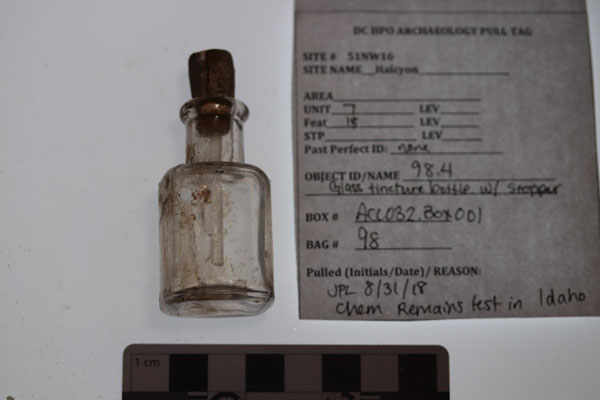
Perfume Bottle from the Halcyon House Collection with pull tag. This bottle was sent to Mark Warner and Ray Van Wandruszka at the University of Idaho for chemical remains testing.
Ok, so at long long last, I’ve returned to talk to you more about tips, strategies, and advice for doing graduate (or undergraduate) research with excavated collections. This post is mostly for PhD students, because it will discuss how to pitch a collections-based project to two major archaeology dissertation grants, the Wenner-Gren Dissertation Fieldwork Grant, and the National Science Foundation’s Doctoral Dissertation Improvement Grant (NSF DDIG). Each of these provides up to $20,000 in research funding, which can include things like travel, equipment, samples analysis, and other field and analysis costs. There are many other resources about applying to these grants, but none that I had found was specific to collections. This blog post will focus on how to pitch a collections’-based archaeological project to NSF and Wenner-Gren. First, I’ll explain why students with collections-based projects should apply for these grants. Then, I’ll discuss how to structure your proposal. I’ll focus in on methodology and budget, because these are distinctive for collections-based projects and crucial to securing funding.
Now, I’ll be totally honest here. I have had mixed success in applying for grants, but ultimately I did not get a major dissertation grant for my project. I agreed to write this blog series, about doing collections-based research as a student, while I was still waiting to hear the results of my proposals. As I went through the process of applying to these two grants, I did receive extremely positive reviews and made it to the second round of the Wenner-Gren twice. I learned so much along the way, and I want to share that advice with other graduate students. But of course, this is just a reflection of my own experience and conversations with peers and mentors, so take it with a grain of salt. BUT, if you, like me, are unsuccessful at getting these big sources of funding, do not despair! In my third and final post, I will talk about how to fund a collections’ based project without big grants. I’m fortunate to have been successful at receiiving some funding from other sources, and I’ll be discussing the lesser-known funding opportunities for collections-based research specifically in my third and final post of this series.
Why Should I apply at all?
Before I applied, I heard a lot of discouraging things about applying to grants with a collections’-based project, including that there’s no point in applying at all. I think it’s still important to apply, but I did find that some reviewers were dubious about a collections’-based project. However, I found at least one fully collections-based NSF DDIG that was funded, and both NSF and Wenner-Gren claim they are open to collections-based research. My Wenner-Gren proposal received favorable reviews both times I applied, and made it through to the second round of consideration. The first time I applied, however, I got the comment that a post-excavation project should not be as expensive as an excavation-based project, and this was one reason my proposal was not accepted. This is a commonly held myth that you will have to confront if you apply with a collections-based project. In actuality, many archaeological projects face major funding issues because they do not budget sufficiently for artifact processing, analysis, and conservation. This is part of what has led to an extreme burden of under-studied collections. Every graduate student should attempt to come up with a dream project that uses the full grant amount effectively. Whether it is a field project or a collections-based project, that money can be well-spent on costs that will forward anthropological and archaeological research. Collections-based research requires its own set of expertise and skills, and it is important that key archaeological funding sources support graduate students in getting the training they need to be collections’ specialists in their careers.
How to Frame your Proposal:
Basically, you should pitch this project much the way you’d pitch a more traditional excavation-based field project. Voss points out that in both collections- and excavation-based projects, knowledge is produced through the encounter between archaeologist and artifact in much the same way (2012). As I explained in blog post 1 of this series (here- add link), collections-based research is important, ethical, and environmentally sustainable. We need more students to be trained in collections-based approaches. BUT, in order to effectively work with excavated collections, you ideally should have experience on excavations and understand the excavation process. In addition to several seasons on a field school project, I spend a few years working as a CRM archaeologist in the Mid-Atlantic. When I began working with excavated collections, I needed to use my knowledge of excavation to understand the field notes, profile drawings, and descriptions of proveniences in order to understand the context of the artifacts. I scheduled a meeting with one of the archaeologists who had originally worked on the Halcyon House excavation in the 1980s, Dr. Elizabeth Crowell, and asked her questions about the excavation and clarified any uncertainties with site forms and documentation.
I tailored my project to NSF and Wenner-Gren in different ways. For NSF, it can be helpful to draw on Kintigh et al’s article “Grand Challenges for Archaeolgy.” (https://www.cambridge.org/core/journals/american-antiquity/article/abs/grand-challenges-for-archaeology/D1CE7CB50C3C5A1854B5A48D71B17AD9). I tried to use more classic anthropology theory, such as Binford and Flannery’s discussions of settlement analysis, theoretical framings of “the household” as a unit of analysis, and practice theory. I constructed hypotheses that could be proven or invalidated by the data. One way to do this is to propose to look at multiple collections together, and create hypotheses about how the material record might vary across a city or region, or over time. I proposed to build on my preliminary research with the Halcyon House Collection by looking at glass bottle artifacts in multiple collections across the city during the same time period. I propsed to use the Halcyon Collection as a key case study in a larger project that drew in comparative collections. In my grant applications, I emphasized that the collections I planned to study were “archaeologically excavated and stored with associated maps, stratigraphic profiles, slide photographs, and excavation field notes,” or were written up in technical reports. I detailed how I planned to use these materials in my methodology, and my criteria for selecting comparative collections. I also argued for the importance of collections-based research and cited scholarship by collections-based researchers to justify my methods. My reviewers, for the most part, seemed to support this argument and during my second attempt, 2 out of 3 of my second round Wenner-Gren reviewers stated that my use of collections was a reason in favor of funding my project.
In pitching a project, the most important aspect is the types of questions it seeks to address, the tie to existing anthropological literatures, innovation, and feasibility. At the end of the day, there’s a mixture of luck and chance involved in who your reviewers are and what they deem to be important to study. Although I made it close and received some positive reviews, the short comings reviewers stated often had more to do with the questions I was asking and whether they could be answered by the data I offered.
Methodology and Budget:
Your methodology section and budget are extremely significant in a collections-based proposal, because one of your key innovations is in pitching and justifying a collections-based approach. Your methodology section should discuss the collection(s) you plan to study, how you have selected these or how you plan to do so, and your methods of analysis. One approach is to go in with a pre-selected collection and justify that further archaeological analysis of these materials will lead to new insights. Another approach is to take a set of collections (ie, all collections at one repository, collections of a particular time period or type across repositories, etc), and create a sampling strategy. One of the proposals I looked at used a nested sampling strategy, which I employed as well. This involves first looking at a large number of collections, and providing criteria for how you will choose which to analyze further. For example, first, you might create a spreadsheet of all the collections available, then explain criteria for choosing 20 collections to revisit, and explain criteria for narrowing this to 5 collections to further investigate for some type of chemical or materials analysis. In particular, I found Anna Agbe-Davies’ article about analyzing tobacco pipes across multiple sites to be a useful source in constructing a methodological approach. The key to the methodology section is in its connectedness to the rest of the proposal. Your proposed methodology should allow you to investigate your research questions or be able to prove OR disprove your hypotheses. In addition, the costs you propose in your budget should be explained and justified in your methodology section.
My project was based in the US and I was living in the city where the collection was located. I used my university stipend to cover my cost of living expenses. However, if your project involves travel to access the collections, this is a great budget item to include. Granters are used to funding these costs because they are also required for excavation-based projects. Especially with a collections-based project, the items in your budget should be discussed in your methodology and should correspond clearly to your research questions.
After receiving feedback from my first submission attempt to Wenner-Gren, it was clear that my budget was a key issue in my proposal. In revising my proposal, I approached critiques of collections-research funding by putting direct and clear costs in my budget. In the first iteration, I had asked for funding to pay undergraduate research assistants to help digitize original records and assist with a massive cataloguing project. This seemed reasonable because many lab projects require multiple hands. While research assistants are allowed, both NSF and Wenner-Gren critiqued my budget for having too large a percentage go to these RAs. The second time I applied to Wenner Gren, I chose to include more direct cost budget items. For example, the collection I was working with has unprocessed soil samples with detailed provenience information. Because my project involved questions about purchased pharmaceuticals versus home-grown homeopathics, and because I had documentary evidence suggesting medicinal botanicals were grown on site, I included funding to work with an archaeobotanist specializing in my region to process the bags of soil and identify macro and microbotanical remains. My collection included many small metal items, some of which had been conserved in the 1980s and were identified as corset clips and lingerie materials associated with the likely Prohibition-era queer scene at the site (see my first post about the Halcyon House Collection for more information). Many other items in the collection were not yet conserved or were more rusted, so I also included costs to x-ray a sample of corroded metal objects in the collection and to conserve those deemed important. I added to my budget that I was saving on costs by assisting with the analysis and that I was getting training in the process. The MAC Lab at Jefferson Patterson Park regularly offers x-ray workshops and has put out a guide here (https://jefpat.maryland.gov/AnalyticsReports/MAC%20Lab%20Guide%20to%20X-Radiography.pdf) by Sara Rivers-Cofield and Nichole Doub. With these types of direct costs in my budget, I got more favorable responses from my reviewers. Not only do these analyses help the dissertating student’s project, but the records and reports will be included with the collection to allow for future research as well.
The Key Takeaways
Ultimately, every graduate student should prepare to do a dream project should they be awarded funding, and a more restrained project if they do not get funding. I recommend shooting your shot – go for the big grants and put your best foot forward. Best case scenario – you win a grant, get funding to do all the analysis you want, and get a CV line that will propel you to the top of job application pools. I strongly believe that collections-based research is an important part of the future of archaeology, and I want other graduate students to successfully obtain funding to explore new methods and approaches to these materials. Unstudied and under-studied collections, containing significant and irreplicable data, currently line shelves of repositories across the country. While often undervalued, collections-based research requires its own set of skills and experience, developed over time. I believe it is important to fund the next generation of scholars in developing collections-based approaches and new methodologies for analyzing this valuable data source.
And if you apply and don’t get the grants? You’ll still learn a ton, refine your dissertation project, read new literature, and have a solid start to several chapters of your dissertation. You will find a way to complete a research project and write a dissertation, and maybe later on you’ll land an awesome post-doc or job that will fund your dream project. Keep these dream project goals in mind, and you’ll be that much more prepared to propose a post-doc project that expands upon your dissertation.
As I said in my first post – one of the benefits of a collections-based project is that it’s very much possible to scale up or down. If you are unsuccessful at getting outside grants, don’t worry. It is possible to write a collections-based dissertation with minimal funding. In my next blog post, I’ll write about the particular sources of funding you can apply for with a collections-based project and how to fund your research without big grants. After all, that’s what I’ve done, and it led to me to unexpected opportunities!
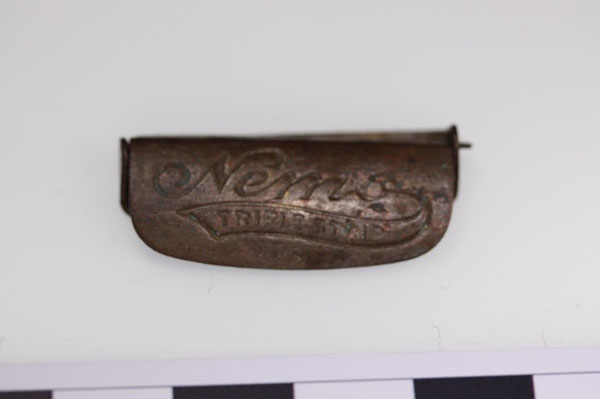
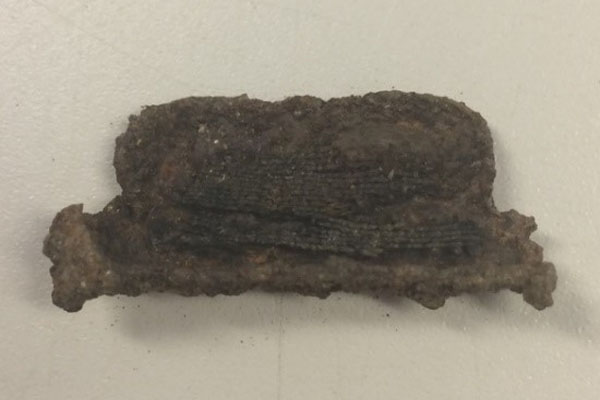
Left: Previously conserved corset clip with inscribed brand name; Right: Rusted corset clip, unidentifiable, with traces of fabric remaining (Both from the Halcyon House Collection).
Key Sources:
Agbe-Davies, Anna S. 2006.
“Alternatives to Traditional Models for the Classification and Analysis of Pipes of the Early Colonial Chesapeake.” In Between Dirt and Discussion: Methods, Methodology, and Interpretation in Historical Archaeology, edited by Steven N. Archer and Kevin M. Bartoy, 115–40. Boston, MA: Springer US.
Childs, S. Terry, and Mark S. Warner. 2020.
Using and Curating Archaeological Collections. The SAA Press.
Childs, S. Terry, and Danielle M. Benden. 2017.
“A Checklist for Sustainable Management of Archaeological Collections.” Advances in Archaeological Practice 5 (1): 12–25.
Flannery, Kent V. 1976.
The Early Mesoamerican Village. Studies in Archeology (Academic Press). New York: Academic Press.
Kintigh, K. W., Altschul, J. H., Beaudry, M. C., Drennan, R. D., Kinzig, A. P., Kohler, T. A., Limp, W. F., Maschner, H. D., Michener, W. K., Pauketat, T. R., Peregrine, P., Sabloff, J. A., Wilkinson, T. J., Wright, H. T., & Zeder, M. A. (2014).
Grand challenges for archaeology. Proceedings of the National Academy of Sciences of the United States of America, 111(3), 879–880. https://doi.org/10.1073/pnas.1324000111
MacFarland, Kathryn, and Arthur W. Vokes. 2016.
“Dusting Off the Data: Curating and Rehabilitating Archaeological Legacy and Orphaned Collections.” Advances in Archaeological Practice 4 (2): 161–75.
Voss, Barbara L. 2012.
“Curation as Research. A Case Study in Orphaned and Underreported Archaeological Collections.” Archaeological Dialogues 19 (2): 145–69.
Watkins, Rachel, and Jennifer Muller. 2015.
“Repositioning the Cobb Human Archive: The Merger of a Skeletal Collection and Its Texts.” American Journal of Human Biology 27 (1): 41–50. https://doi.org/10.1002/ajhb.22650.
2021 Past Presidents’ Student Reception on Careers in Federal, State, and Local Agencies
A Summary of the 2021 Past Presidents’ Student Reception on Careers in Federal, State, and Local Agencies Society for Historical Archaeology 2021 Virtual Conference
By Duane Quates, Mandy Ranslow, and Will Reed
The Past Presidents’ Student Reception session on careers in Federal, State, and Local Agencies took place on Wednesday, January 6, 2021, from 12:00 to 1:00 pm CST. During this hour-long session, students were given the opportunity to engage, question, and discuss employment opportunities and career strategies with three SHA leaders that work in the federal, state, and local government career path.
The following is a summary of the discussions from the session. The panelists for this session were Duane Quates, Mandy Ranslow, and Will Reed:
- Duane Quates earned his B.A. from the University of West Florida and his M.A. and Ph.D. from Michigan State University. He began his government career as an archaeological student assistant with the Michigan Department of Transportation. Afterwards, he worked for the U.S. Department of the Army as a Federal Archaeologist at Fort Drum, New York, for almost seven years. In 2016, he transferred over to the U.S. Department of Agriculture (USDA) Natural Resources Conservation Service (NRCS), where he currently serves as the State Cultural Resource Specialist and Archaeologist in Michigan.
- Mandy Ranslow earned her undergraduate degree from Boston University and a master’s degree from University of Connecticut. Afterwards she was employed doing contract archaeology for eight years. She later gained employment as a Transportation Planner /Archaeologist with the Connecticut Department of Transportation (DOT). After six years of transportation experience at Connecticut DOT, she became the Federal Highway Liaison at the Advisory Council on Historic Preservation (ACHP), where she currently works.
- Will Reed earned his B.A. from Fort Lewis College and an M.A. from Idaho State University. He began working with the U.S. Forest Service in 1976. He then went on to work with the Bureau of Land Management (BLM) and then moved into contract work. He later returned to the U.S. Forest Service in 1987 and has been there ever since. He currently serves as Regional Heritage Program Leader and Passport in Time Program Coordinator for the U.S. Forest Service Southwest Region.
In early December 2020, SHA sent students who registered for the 2021 Virtual Conference, a survey with a list of questions about careers in historical archaeology. In this survey, students were asked to select the career type or types of their choice, and then select the top three questions they would like the session panelists to address in terms of these career paths. Students were also asked to add their own questions for the session panelists. During the first half of the session on careers in Federal, State, and Local Agencies, the session panelists responded to the top three survey questions:
QUESTION: What types of work experience and/or non-academic training do I need?
The short answer is internships and experience on archaeological projects. Students should make sure that they meet the Secretary of the Interior’s (SOI) Professional Qualifications Standards for archaeology before applying for government positions. The best way to do that is to gain work experience in archaeology. The panelists recommended taking on internships, even if unpaid, or take on summer work on archaeological projects. Education is only one-third of the SOI Professional Qualification Standards. Applicants will need to be able to show that they have the minimum 2½ years of experience and the related products and activities to demonstrate their proficiency in archaeology.
QUESTION: How should I structure my resume or CV to pursue this type of career?
The applicant should think of their CV or resume as the primary means through which they can convey to the employer that they are SOI qualified. It should be structured to include the three criteria of the S standards: education, work experience, and product and activities that demonstrate proficiency. Students often have a hard time communicating their work experience and the products and activities. The panelists advised that students should break down the work they have done toward earning a graduate degree into tasks and products. Include internships and volunteer work in your work experience. For example, volunteering for 2 years at an archaeological lab for 10 hours per week is 6 months of full-time work experience. As for products and activities, these can include such things as conference papers, presentations at historical or archaeological societies, participation in public outreach events, contributions to archaeological reports, book chapters, journal articles, and so on. All of these should be documented on the CV.
Duane Quates pointed out that when applying for federal jobs, you should tailor your CV or resume to the specific position that you are applying for. Using the USAJOBS.com resume builder you can create multiple resumes. When applying for a particular position use the key words in the position announcement to describe your education, experience, and activities and products. If the position asks for 2 years of “Section 106 review experience” do not use the phrase “cultural resource review experience.” The reason for this is that, as a first step, automated agency employment systems scan for these key words and rejects those that do not seem to match. Make it easier for the automated system to choose your application by using the exact wording in the position announcement. Mandy Ranslow noted that during her employment career, she used a similar strategy where she has a master CV that she would never submit for an application but cherry picks from the master what she thinks is the relevant experience to match the position announcement.
Will Reed pointed out that demonstrating proficiency in communication is very important. Do not be verbose. The aim is to communicate efficiently and concisely. Do not submit a 127-page application, as one unfortunate applicant did for a position with the Forest Service.
QUESTION: What type of courses do I need to take?
The panelists agreed that most academic courses within a M.A. or Ph.D. program are sufficient but that no academic program will give you all the skills necessary for your career. However, taking courses on cultural resource and heritage law could prove to be beneficial to a student. Will Reed advised that students may wish to take courses that will provide them with GIS, technical, computer literacy, accounting, or administrative skills, as these are becoming more and more valuable in the current job market. Duane Quates pointed out that academic programs will never adequately prepare the student for a career outside of academia. There are many skills that are emphasized in academic courses that the student may never be asked to perform in their career and vice versa. For example, he said that he recently had an intern asked him on advice on how to write a National Register nomination for a class assignment. Duane had to admit that the only time he had ever done one was in a similar course in 1999 but had never been asked to write, or even review one, in his 15-year government career. The takeaway message here is that the student should be prepared that their academic program may leave them lacking in certain types of skills needed for a career outside academia or may provide proficiencies in skills that may not be pertinent to their desired career path. In either case, they should expect to have to learn on the job.
The panelists then addressed the following additional questions that were posed by students responding to the December 2020 survey:
QUESTION: What is the best way to look for federal, state, and local agency jobs?
For federal jobs use USAJOBS.com to search for positions. For state and local governments, you will need to search through their posted job listings or through other forums like Shovelbums.org. Mandy Ranslow added that you should keep in mind that some positions do not have archaeologist in the title so you may have to do a keyword search for archaeology. For example, she was a Transportation Planner for the Connecticut DOT and is currently the Federal Highway Administration’s Liaison with the ACHP. Neither position had archaeology in the title, but both were positions requiring someone with qualifications in archaeology (or architectural history).
QUESTION: Is the market run exclusively through networking or can an applicant without a connection apply for a job and be successful?
On the surface, government hiring may seem like a blind search and that only qualifications are considered. However, the hiring process has multiple stages of evaluation. The interview is the only stage where a specialist in the field enters the hiring process. They do not do the hiring; they only make recommendations and rank the candidates on the list they are provided. So, applicants appear to have an equal chance, depending on qualifications and how well their applications are written, to get to the interview process. However, once in the interview with the specialist, networking may come in handy. All three panelists admitted that their networks helped them in getting government positions. Mandy Ranslow was asked to apply for the Transportation Planner position with the Connecticut DOT. Duane said that when he interviewed for his first federal job, although he did not know the people that interviewed him, they did know at least one of his references and spoke to them prior to the interview. Will confessed that when he applied for his current position, he wrote the shortest application of his career. He stated, “…if you spend enough time in government service you compile enough work that others know who you are, and your work speaks for itself.” The takeaway message here is to develop your networks while in graduate school.
During the second half of the session, attendees were asked to post their own questions in the Chat Box, and the panelists responded to each question in turn.
QUESTION: Is the only route into these jobs through field work or do lab geeks have a chance as well?
Mandy noted that the session discussions had been a little fieldwork heavy as all the panelists were, at least formerly, field archaeologists. However, there are certain laboratory and curatorial jobs in government, so individuals with these skills should look for these types of positions. Duane pointed out that when considering the SOI qualifications, the work experience requirements does not distinguish between field and lab, so he felt that applicants with more laboratory and curatorial experience had an equal chance as those with field experience of obtaining most archaeologist positions in government.
QUESTION: Can those that do not have U.S. citizenship acquire a federal, state, or local government job or contract?
Federal positions require U.S. citizenship, but state and local government positions do not necessarily require U.S. citizenship. These, of course, vary from organization to organization.
QUESTION: How important are independent research presentations or presentations based on job-related findings for career advancement within agencies? How does this factor into professional development or obtaining jobs with greater responsibility?
Presenting findings to the public is one responsibility of most government archaeologists. Whether it is through public forums, conference presentations, or some type of publication, government archaeologists have a federal mandate to provide their findings to the public. This is one of the many skills that is sought during the hiring process and such endeavors, coupled with others, could lead to advancement within the federal government.
QUESTION: How can students prepare themselves to understand Native American consultation and working with tribes.
Tribal consultation is one of the most important aspects of an archaeologist’s responsibilities in government. Those students looking to go into government archaeology would find that this is an advantageous skill to develop. Students can do this by volunteering with tribal projects and working directly for Tribes in your area. Many Tribes have archaeologists and cultural centers that may benefit from volunteer help or may be hiring on a fulltime, part-time, or seasonal basis. Additionally, if you have an internship with a government agency, inform your supervisor that this is a skill that you would like to develop and ask to be involved with tribal consultation.
The panelists would like to thank the Society for Historical Archaeology for holding this forum, and specifically, Mr. Terry Klein and Dr. Teresita Majewski (session organizers) for inviting us to participate in this way and for all the hard work they did in putting this together.
A Closing Note from Terry Klein and Terry Majewski:
We were very pleased about the results of this and the other career sessions. Exchanges between the panelists and attendees were lively and very informative, and several attendees acknowledged their thanks at the end of each session. We are looking forward to the next Past Presidents’ Student Receptions in Philadelphia! It will be great to finally see everyone in person! If you have any questions about this and the other career sessions, or future Past Presidents’ Student Receptions, please contact Mr. Terry Klein (tklein@srifoundation.org) or Dr. Teresita Majewski (tmajewski@sricrm.com).




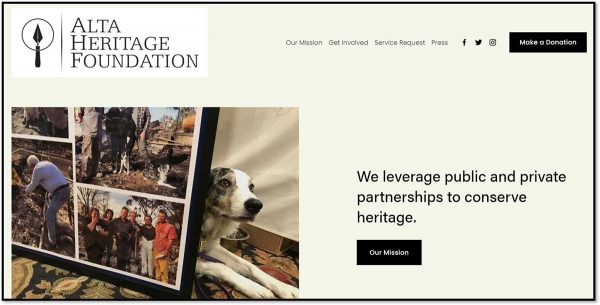
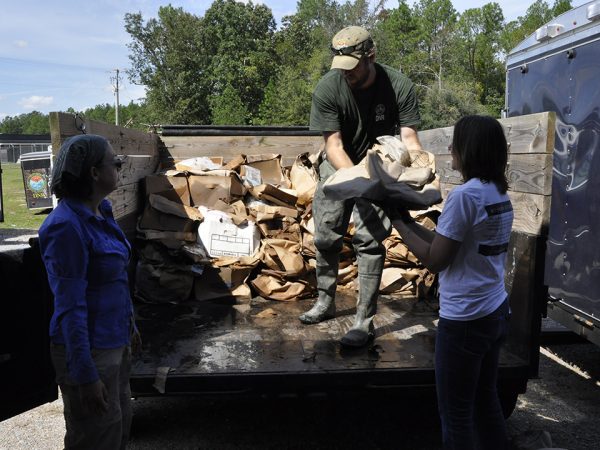
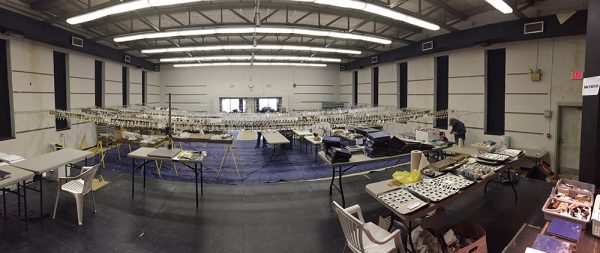
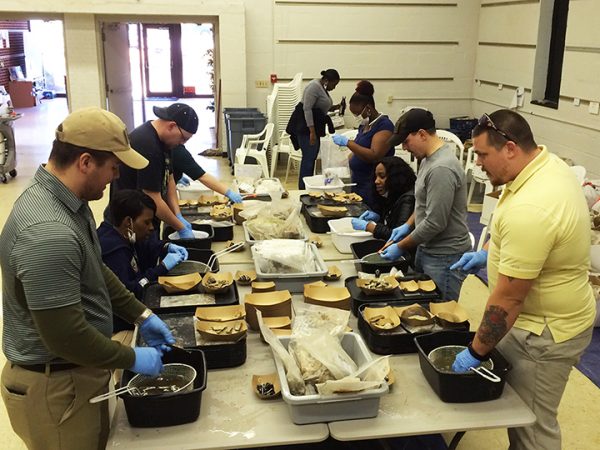
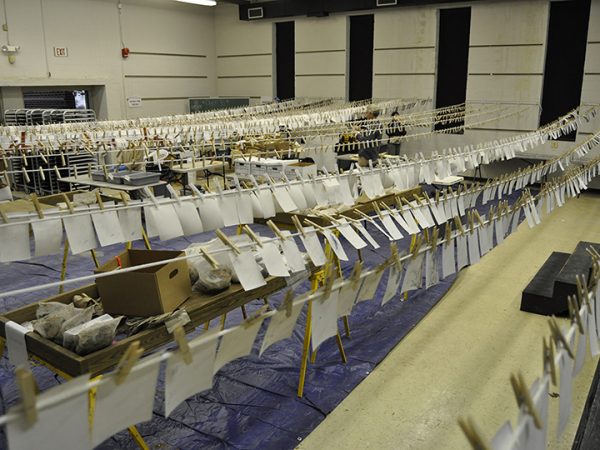
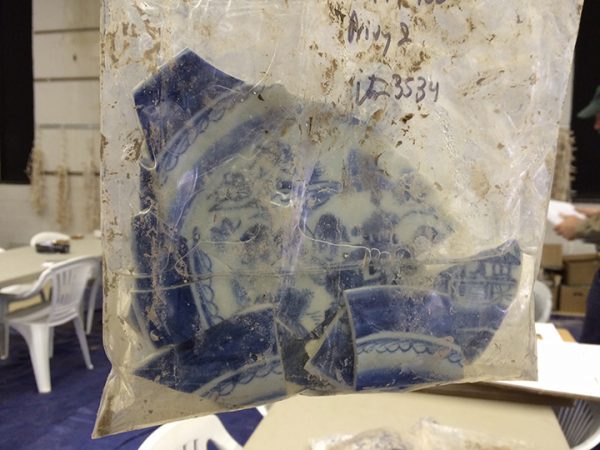
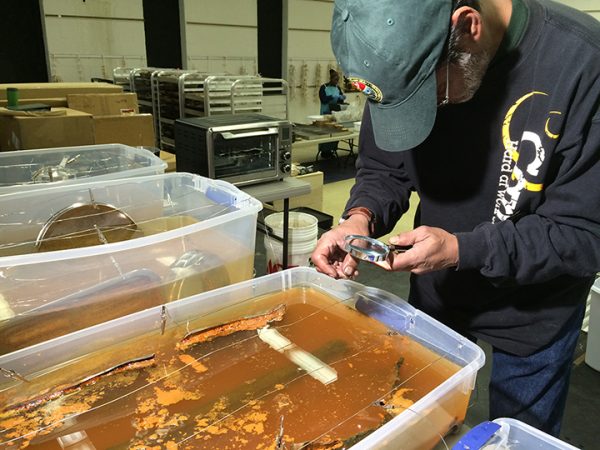
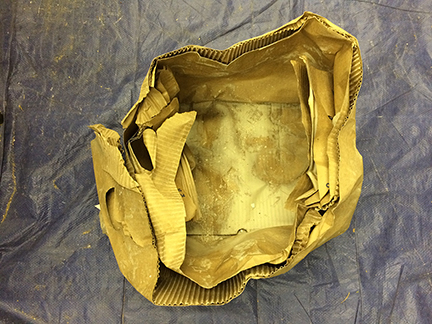


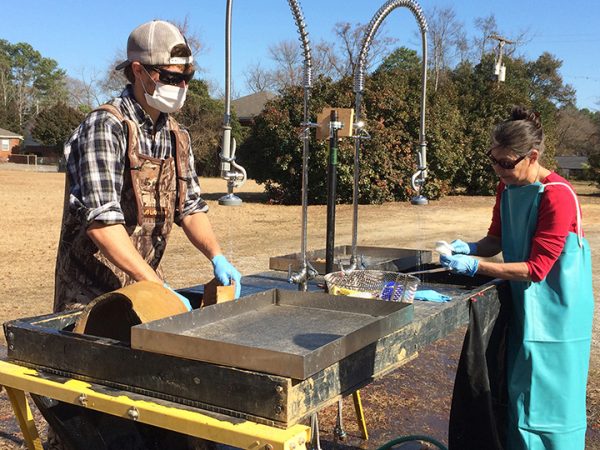
Pingback: WAC May 2012 eNewsletter – Volume 40 – World Archaeology Congress